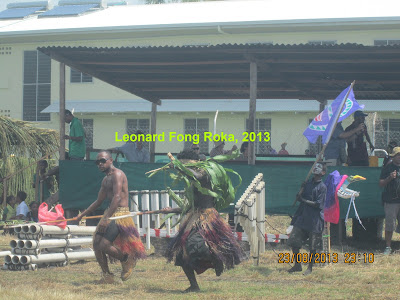Recently there's
been a lot of talk about reopening of the Panguna copper-gold mine in the
Autonomous Region of Bougainville, Papua New Guinea (PNG). Established
in the early 1970s by Bougainville Copper Limited (BCL), a subsidiary of
Rio Tinto, the mine was one of the world's largest copper-gold mine and
generated significant revenue for PNG’s economy until mining operations were
suspended due to militant activity in May 1989. This conflict led to a 10 year
civil war and caused the deaths of an estimated 15,000 to 20,000 people. A
peace agreement was eventually signed in 1997, followed by an amendment to the
PNG Constitution. After all these years, the mine is set to reopen.

If the Panguna copper-gold mine is going to reopen, it will need to gain approval and support not only from the local people of Bougainville, but also from the PNG National Government (National Government). Gaining community support will be a major hurdle for not only BCL but any other company wanting to conduct mining operations on Bougainville Island. The Autonomous Bougainville Government (ABG) is proposing to introduce new mining laws which would allow landowners and the ABG to share rights to sub-surface minerals. Traditional landowners would share mineral rights with ABG.
The proposed laws
would likely be supported by many people, both on Bougainville and the mainland
of PNG. The idea of handing over national government control of PNG’s mining
resources to customary landowners isn't new. During 2011 and 2012, there was
much debate about the Natural Resources Ownership Bill (Kondra Bill).
The Kondra Bill attempted to amend existing mining and petroleum legislation by
replacing the word “State” with either “Customary Landowners” or “Landlords”.
Despite many
attempts over the years, PNG’s mining and petroleum regime remains the same.
The formal position with respect to both minerals and petroleum can be seen in
Section 5 of the Mining Act 1992 which provides:
“All minerals existing on, in or below the
surface of any land in Papua New Guinea, including any minerals contained in
any water lying on any land in Papua New Guinea, are the property of the
State.”
When the Kondra
Bill was provided for public comment, it wasn't supported by the mining
industry. The mining industry believed that the Kondra Bill was “extremely
naive” and unworkable[1].
Although the PNG
Constitution was amended to allow the Autonomous Region of Bougainville to make
laws in relation to mining, such laws aren't necessarily guaranteed. Section
292(3)(a) of the PNG Constitution provides that even if ABG passes the proposed
mining laws, the National Government would still need to agree with the
legislation, otherwise the law won't take effect until a dispute resolution
process reaches a final determination.
If the National Government is to support the proposed mining laws, then it will need to consider if the proposed mining laws will be in PNG’s national interest. Some of the issues that the National Government is likely to consider are whether or not the proposed mining laws will increase the perception of sovereign risk to foreign investors in PNG, and whether or not this could impact on existing and future projects. On this point, Prime Minister Peter O’Neill had previously reported that PNG's government is not about creating sovereign risks for foreign investment in PNG.[2]
If the National Government is to support the proposed mining laws, then it will need to consider if the proposed mining laws will be in PNG’s national interest. Some of the issues that the National Government is likely to consider are whether or not the proposed mining laws will increase the perception of sovereign risk to foreign investors in PNG, and whether or not this could impact on existing and future projects. On this point, Prime Minister Peter O’Neill had previously reported that PNG's government is not about creating sovereign risks for foreign investment in PNG.[2]




























